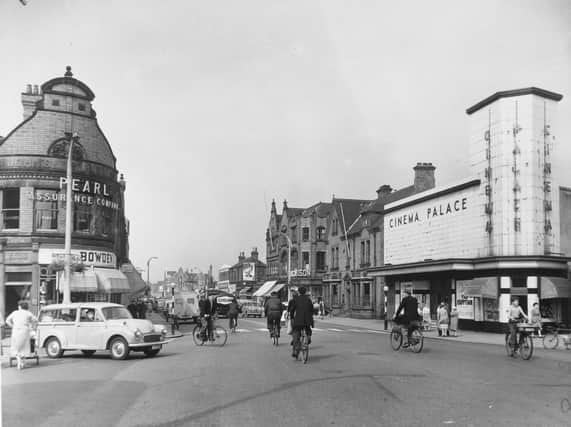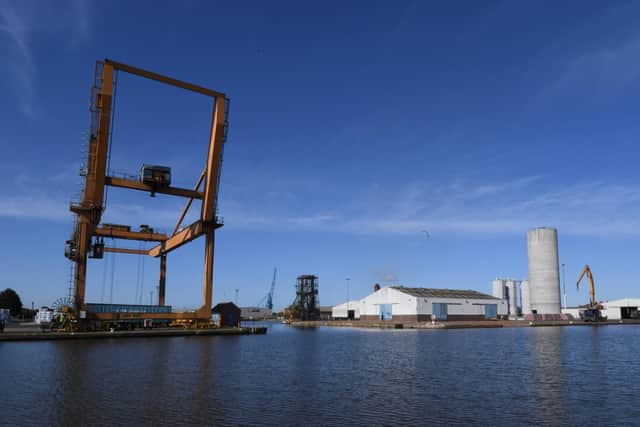Goole, the 'port in green fields' once at centre of Yorkshire coalfields industry and a town on the up


The port town of Goole was established only 200 years ago, which makes it a relative youngster in the long history of East Yorkshire. Its fortunes have undoubtedly risen and fallen at different points during the last two centuries but, with hundreds of new homes and jobs being created and a £750,000 slice of the Government’s Town Deal funding on the way, its future is looking very bright indeed.
Although Goole can trace the origins of its name back to the less than salubrious sounding Anglo-Saxon word for an “open sewer” or “outlet to a river”, previous settlements in the area centred upon the nearby farming villages of Airmyn and Hook. King Charles I had paved the way for the surrounding land to be used for arable farming when he granted a charter to the Dutch engineer Cornelius Vermuyden, allowing the River Don to be diverted into the Ouse, rather than the Aire.
Advertisement
Hide AdAdvertisement
Hide AdHowever, it wasn’t until the Aire and Calder Navigation Company built a canal between Leeds and Goole in 1823 that the town as we know it today sprang up. This all-important waterway was used to export coal from the West Riding to the continent, via Goole. In 1826, a port charter was granted and this development led to the creation of Goole’s first street – Adam Street.


Engineers developed an innovative system of transporting coal using boats made up of a series of compartments, which were nicknamed Tom Puddings and linked together in long “trains” that were towed along the canal by a tug. At the docks, hydraulic compartment boat hoists lifted the Tom Puddings and tipped their contents into the holds of waiting ships.
For more than 150 years, Goole’s port was the primary route used to export coal from Yorkshire’s coalfields and, even after the town’s railway links were developed, the Aire and Calder Navigation continued to play a central role in this. However, the demise of the coal industry means that the nature of the goods being transported has changed dramatically in recent years.
As Britain’s most inland port, Goole docks still handles around two million tonnes of cargo annually. A proportion of this freight still reaches Goole via the canal but, these days, the boats tend to carry oil, sand or gravel.
Advertisement
Hide AdAdvertisement
Hide AdGoole essentially started life as the “company town” of the Aire and Calder Navigation Company and grew wealthy on the back of the booming trade through its port. Many of its best-known buildings and landmarks date back to this era, including the Lowther Hotel on Aire Street, which was built in 1824 by Sir Edward Banks.
Originally known as the Banks Arms, in 1835 it was renamed after the first chairman of the Aire and Calder Navigation Company, Sir John Lowther. During the latter part of the 20th century, the Lowther Hotel fell into disrepair and eventually closed. However, when it was restored in 2008, murals showing how the docks looked in 1828 were uncovered in rooms on the first floor, which the Aire and Calder Navigation Company had used as its boardroom and chairman’s office. They have been painstakingly restored and are now on display to visitors.
Other well-known landmarks include Goole’s water towers, which are known locally as the “salt and pepper pots”; the central clock tower, which was built to commemorate the town’s centenary in 1926; and the prominent spire of St John’s Parish Church, a Grade II-listed building constructed in the mid-19th century. All stand within a stone’s throw of the docks, highlighting just how central they were to the early life of the town.
Like many small towns, Goole suffered as a result of the decline of traditional industries but, once again, its excellent transport links are spearheading a revival in its fortunes. However, these days, its road and rail links are proving equally as important as its port and canal.
Advertisement
Hide AdAdvertisement
Hide AdThe development of land close to the M62, has attracted the likes of glass manufacturer Guardian Industries while Tesco has a large distribution centre nearby. More recently, Siemens Mobility announced plans to create 700 jobs by locating a £200m rail manufacturing facility in Goole, and a worldwide distribution hub is being built for chemicals company Croda.
This rapid industrial growth has prompted a need for new homes to be built and East Yorkshire-based developer Beal Homes has started work on its largest ever housing development, which will see 800 new homes built on a 73-acre site on the edge of the town over the next 15 years.
In a further boost for Goole, it was one of 101 towns offered the chance to take part in the Government’s Town Deal scheme. It was recently announced that six projects identified by Goole’s Town Deal Board have secured a £750,000 share of the first phase of funding for projects that will be delivered by March 20201.
The Town Deal Board is now developing proposals for further rounds of funding, which will be submitted to the Government early next year, as its chairman, Joseph Richardson, explains: “Our long-term aim is to reboot the town centre economy and deliver long-term investment.”
Advertisement
Hide AdAdvertisement
Hide AdAround £190,000 of the money will be spent on repairs to the Market Hall and this is seen as a positive step towards securing its future following the closure in 2019 of the town’s once thriving market. Urgent repairs will also be carried out at sports venue the Victoria Pleasure Ground and there is also a £150,000 “parks package” to encourage outdoor physical activity and increase accessibility to the town’s open spaces.
Meanwhile, the town centre will receive a much-needed £100,000 boost to help it bounce back from the Covid-19 pandemic, and a scheme that provides young people with mopeds so that they can access employment and training will be expanded.
One of Goole’s hidden gems – Oakhill Nature Reserve – will also receive a share of the money to improve accessibility, seating and signage. Spread across 165 acres, Oakhill is one of the largest areas of green space in the East Riding. It’s a truly wild space made up of woodland, ponds, meadow and reed beds that attracts a host of rare species, from great crested newts and water voles to marsh harriers, willow tits and turtle doves.
It has been dubbed “Goole’s green lung” and it is hoped that encouraging more people to use the site could play an important role in tackling a wide variety of issues affecting the local community, from obesity to dementia.
Advertisement
Hide AdAdvertisement
Hide AdIt is hard to believe that this picturesque beauty spot has been reclaimed by nature only during the last 40 years or so. Up until the early 1970s, it housed the network of railway sidings used to transport coal to the docks for shipment, as well as engine sheds and railway workers’ cottages.
Change is happening at a grassroots level too, with a host of fledgling businesses springing up on the Salt and Pepper Trading Estate, including a former abattoir site close to the docks that is being transformed into a new shopping venue.
Long seen as a poor relation to other more affluent areas of the East Riding, Goole is a town that appears to be on the up – and long may its revival continue.
Support The Yorkshire Post and become a subscriber today. Your subscription will help us to continue to bring quality news to the people of Yorkshire. In return, you'll see fewer ads on site, get free access to our app and receive exclusive members-only offers. Click here to subscribe.